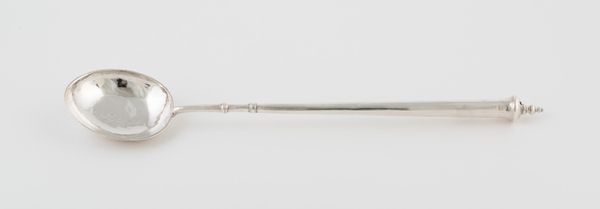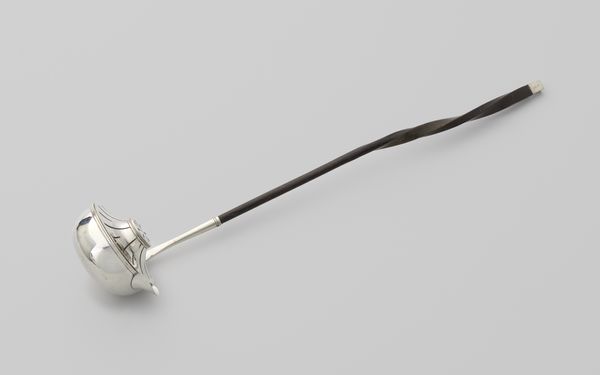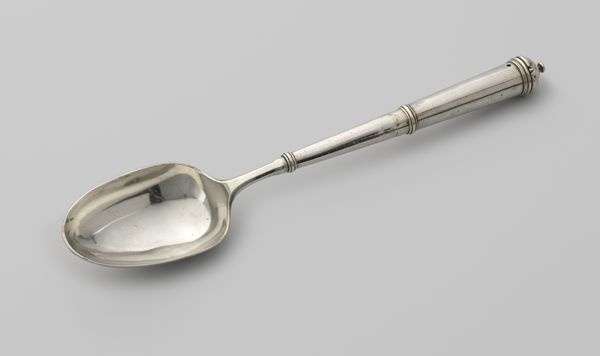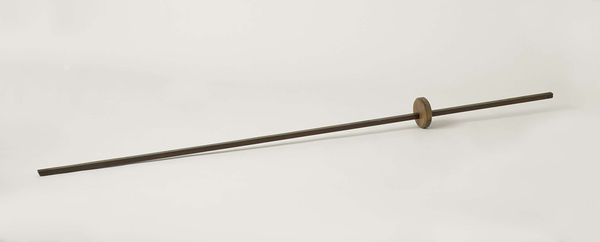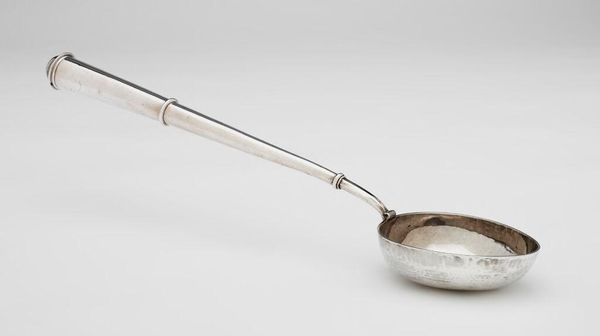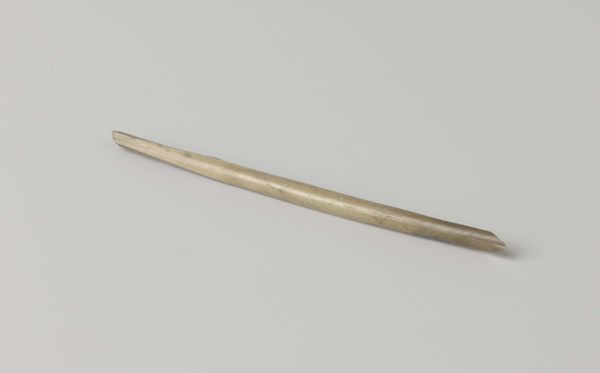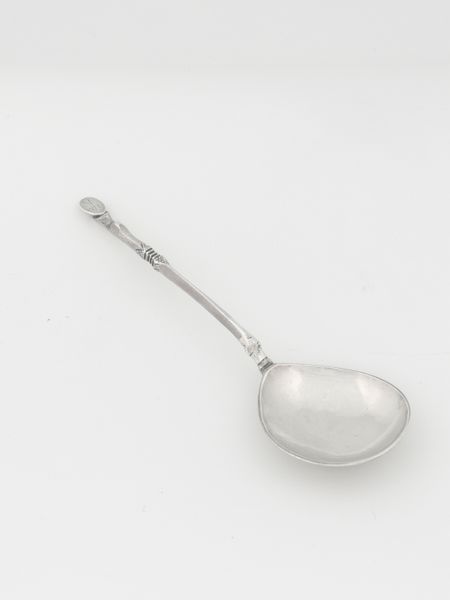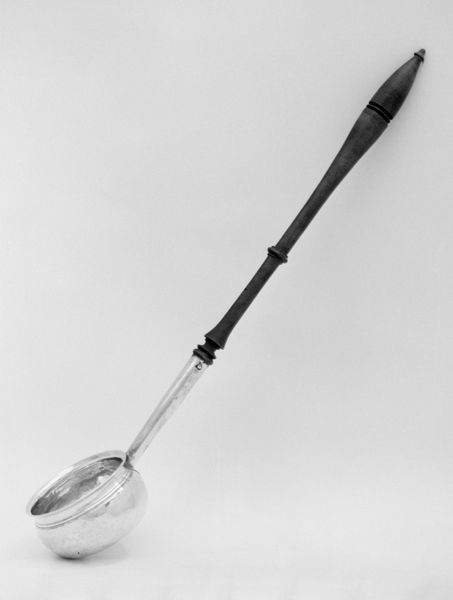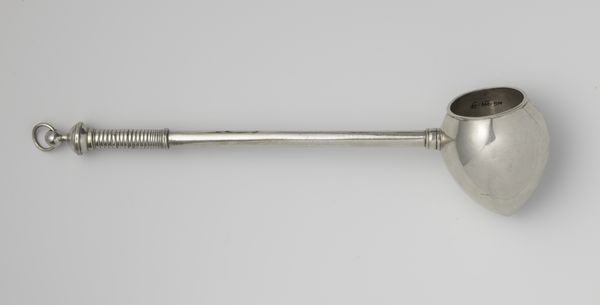
silver, metal
#
silver
#
metal
#
decorative-art
Dimensions: L. 31.1 cm (12 1/4 in.)
Copyright: Public Domain
Curator: The sheer gleam of the metal gives me a chill. Is it the austerity of a well-polished virtue or the ostentation of pure, unadulterated wealth? Editor: You’ve just articulated a polarity embodied, interestingly enough, in this simple piece. What you are observing is a silver Ladle, dating back to 1719, crafted by William Looker. It is currently held in the collection of The Art Institute of Chicago. Curator: The material itself, the cold and sterile silver, evokes a sense of control. Silver, throughout history, has been a symbol of purity, associated with the moon, the feminine, the chaste Diana. Editor: But in the early 18th century, silver's societal implications are equally compelling. We must consider the political and economic backdrop against which this Ladle emerged. Owning something so meticulously crafted in precious metal spoke volumes about the owner's status during the height of colonialism. Curator: Indeed. There is an element of performative status in its reflective qualities. This wasn’t simply about *having* but *being seen to have*. It’s an act of image-making as potent as any painted portrait. Editor: Right, but it's more nuanced than mere display. In the 18th century, having luxurious objects at one’s table meant the ability to participate in trade routes which perpetuated great suffering across colonized lands and peoples. Who did this object truly serve? Whose hands were bloodied to create and possess such finery? Curator: And how many hands touched it before it reached its owner? Silver carries the weight of the hands that mined it, the hands that smelted it, and the hands that polished it. They all imbue the metal with stories—visible and invisible. It becomes a cultural palimpsest of privilege. Editor: I agree. Reflecting on these historical implications shifts the way we understand objects like this, demanding a dialogue with their darker, largely unspoken histories. Curator: Thank you. The silence this object holds resonates long after one stops looking. Editor: Absolutely. An invitation to both appreciate its artistry and question its implications.
Comments
No comments
Be the first to comment and join the conversation on the ultimate creative platform.
